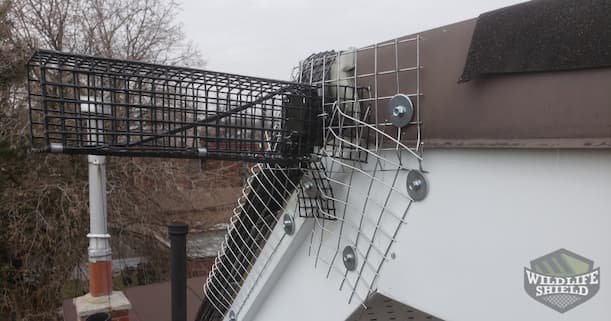The following case study deals with squirrel removal in Old Toronto. Squirrels were found nesting in the soffits of a century home and promptly removed with a one-way door. Excluding vulnerabilities on the property and having soffits repaired have since left this property squirrel-free. Call Squirrel Control today for an inspection and solution that works for you.
The homeowner in this case called Squirrel Control in March, reporting that they could hear noises between the second and third storeys of their home. They were not sure where the squirrels were coming from but suspected that they were nesting indoors. Hearing strange noises in the ceiling is a common sign of a squirrel problem. Squirrels break into attics and ceiling voids in the spring to raise their young. A technician soon arrived on the scene to inspect the problem.
Inspection
The first thing the technician did was inspect the home’s exterior. Our technicians do this with every job to identify vulnerabilities and potential entry points. The technician on site initially found sparrows flying in and out of a gap in the soffits and saw squirrels running around on the roof.
Upon closer inspection, he found a 10-foot gap along the edge of the roof, large enough to fit a squirrel. Another gap was found on the edge of the roof, showing signs of squirrel scratching and chewing. Squirrels often get into interior spaces by finding small gaps like this in the roof and opening them wider so they can fit.

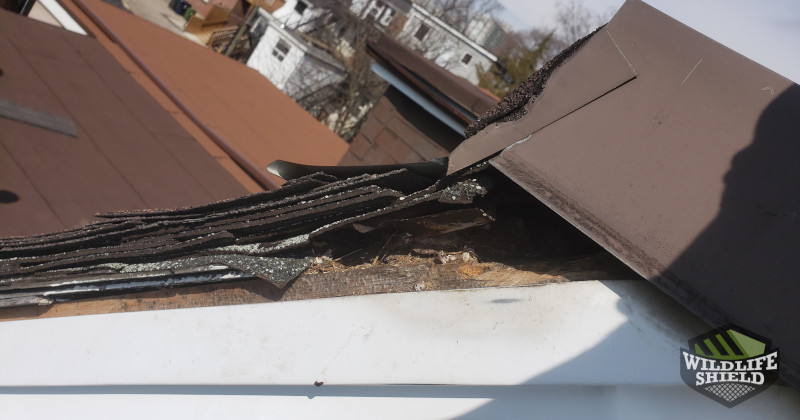
To get rid of the squirrels, the technician recommended having a one-way door installed to the squirrels’ entry point. Like an open-ended trap, the squirrels would crawl out the door when they need to feed, then be unable to get back inside. This is a humane and effective way to evict squirrels. As for the birds, another, smaller door would need to be installed. The technician also recommended having the 10-foot gap in the roof’s edge secured with mesh. This would help prevent another squirrel problem.
The homeowner agreed to have the squirrels evicted with the one-way door, and to have mesh installed along the 10-foot gap. Two technicians returned the following week, with all the safety gear necessary to reach the squirrel’s entry point.
Initial Exclusion
A one-way door was installed on the squirrels’ entry point, then 10 feet of mesh were secured onto the gap along the edge of the soffits. Both the door and the mesh consisted of a 16-gauge, galvanized steel. This is our chosen material because it is too thick for rodents to chew through. It’s also narrow enough that they cannot crawl inside. The galvanization helps make this material weather-proof so it can last for many years without leaving any rust marks on the roof.
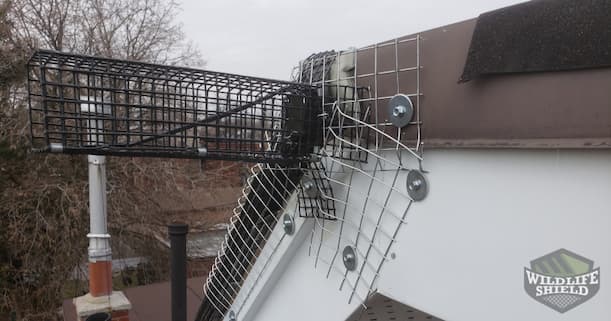
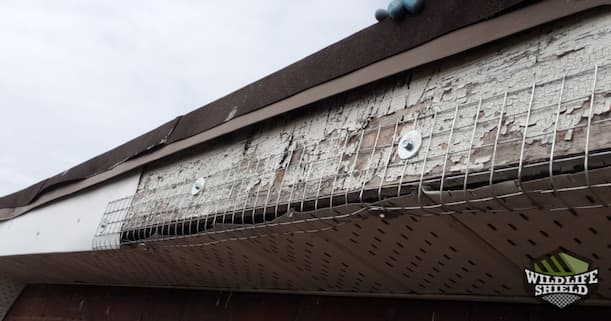
Once the door and mesh were installed, the technicians assured the homeowner that the squirrels should be gone within a week. They would then return and remove the door, then replace it with galvanized steel mesh.
Follow-up
Within a few days, the noises stopped. But just when a technician was going to return and remove the one-way door, the homeowner started hearing noises again. While unfortunate, this is fairly common. Squirrels that were happy in their nests sometimes want to come back, and so they tear a new hole in the roof. Given the state of the roof in this case, the squirrel simply made a new hole. A technician quickly returned to investigate.

A new door was promptly installed to the new entry point. The other door was removed and replaced with mesh. Additional mesh was installed around the new door to ensure that the squirrel could not come back to the surrounding area.

A few weeks later, in June, the technician returned to remove the one-way door. The homeowner was no longer hearing noises in their ceiling and scheduled a roofing company to make further repairs. Maintaining the roof and excluding it from wildlife would keep this property squirrel-free for many years to come.
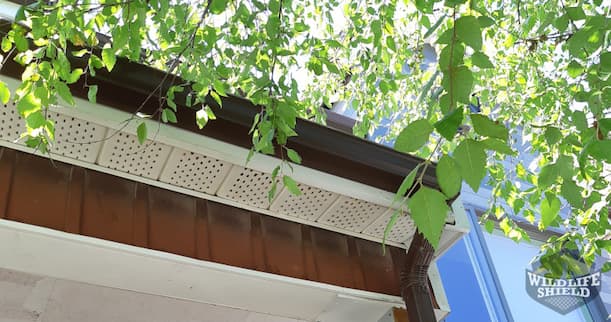
Conclusion
Squirrels are persistent animals that like to nest in attics because they are warm and safe from predators. In some cases, it takes repeated removal to deal with a squirrel. It is for this reason that our squirrel removal and squirrel-proofing services come with a 2-year warranty. If the squirrels come back in through our work, we will return and fix the issue for free. Call us today for squirrel services in Toronto and beyond. Our technicians are trained, licensed, insured, and experienced in all forms of squirrel removal.
